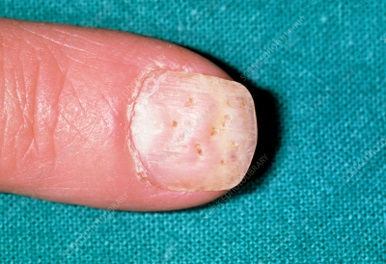Systemic Sclerosis...you Ssslippery Ssnnakke!
- bhofeld
- Aug 20, 2019
- 2 min read
Dr. Dan Nelson presented a very interesting case of a 49 yo M presenting to the ER with dull progressive chest pain x1 week, made worse by laying down. During this time he experienced progressive SOB.
Our patient had an established history of Raynaud's and had been experiencing diffuse skin thickening for some time. He was in the process of being worked up for connective tissue disease and was thought to have some variant of Systemic Sclerosis.
Apart from a large pericardial effusion, he was found to have severe hypertension and an AKI, consistent with Scleroderma Renal Crisis.
Overview of Scleroderma Disorders:

*Scleroderma and Sclerosis can be used interchangeably (e.g. Systemic Sclerosis = Systemic Scleroderma).
SYSTEMIC SCLEROSIS (SCLERODERMA)
Definition of Systemic Sclerosis - multiorgan disease characterized by fibrosis and vasculopathy
Scleros = “thick” in Greek
Subsets:
•Limited cutaneous
•Diffuse cutaneous
Epidemiology:
-Prevalence 275/1,000,000
-Incidence 19/1,000,000
Pathophys: multiple means resulting in fibroblast activation and overproduction of collagen.
1. Vascular injury -> endothelial cells release endothelin-1 -> vasoconstriction, vascular SMC proliferation + fibroblast activation
2. Platelet activation -> release of growth factors -> vasoconstriction, fibroblast activation, and collagen production
3. B-cell activation -> IL-6 production -> fibroblast activation
Physical Exam Findings (for both Diffuse Cutaneous and Limited Cutaneous)
•Puffy/swollen fingers/non pitting hand edema

•Skin thickening
•Perioral skin tightening
•Pitting of fingertip

•Raynaud's (in limited cutaneous (CREST). One of the earliest manifestations)

•Painful superficial digital ulcerations
•Calcinosis cutis (in limited cutaneous (CREST))
•Tendon Friction rubs
Laboratory Testing
•CBC w/ diff (looking for anemia due to MAHA)
•BMP for Creatinine level (screen for Scleroderma Renal Crisis)
•CK for possible myopathy
•UA (should be bland or with mild proteinuria)
•ANA, anti-Scl 70, Anti-centromere (ACA), Anti-RNA polymerase III
Diagnosis: 9 points needed from the following Classification System:

Specifics of Diffuse Cutaneous and Limited Cutaneous Variants:
Diffuse Cutaneous:
•Widespread and rapidly progressive skin thickening (proximal to elbows, knees)
•Early visceral involvement (lung, heart, kidney)
Limited Cutaneous:
•Restricted and non-progressive skin thickening (distal extremities)
•Late visceral involvement (PAH)
•Includes CREST:

How Each Disease Variant Progresses:

Treatment for Systemic Sclerosis
•Organ-based symptomatic treatment
•Reflux --> PPIs
•Raynaud’s --> calcium channel blockers
•Reasons to initiate Immunosuppressants:
•Diffuse skin involvement that is severe/progressive
•ILD --> cyclophosphamide or MMF
•Myocarditis
•Severe inflammatory myopathy/arthritis
•Diffuse skin involvement w/o visceral involvement - Methotrexate (MTX) or MMF
•Refractory cases: IVIG, rituximab, etc.
Scleroderma Renal Crisis
What is it?
3 main features:
1.Abrupt onset of moderate-severe HTN
2.AKI
3.UA that is normal or reveals mild proteinuria
Supportive Labs:
• Microangiopathic hemolytic anemia w/ schistocytes
•Thrombocytopenia
Epi:
•5-20% of pt’s with dcSSc
•Much less common in limited cutaneous SSc
•Within 5 years after disease onset
Risk Factors:
•Pt’s with tendon friction rubs
•Use of moderate to high glucocorticoids
•Presence of anti-RNA polymerase III antibodies
How to Treat it?
•High dose ACEi (captopril)
•Control blood pressure
•ACEi should be continued even in worsening sCr
•Dialysis may be needed temporarily



Comments